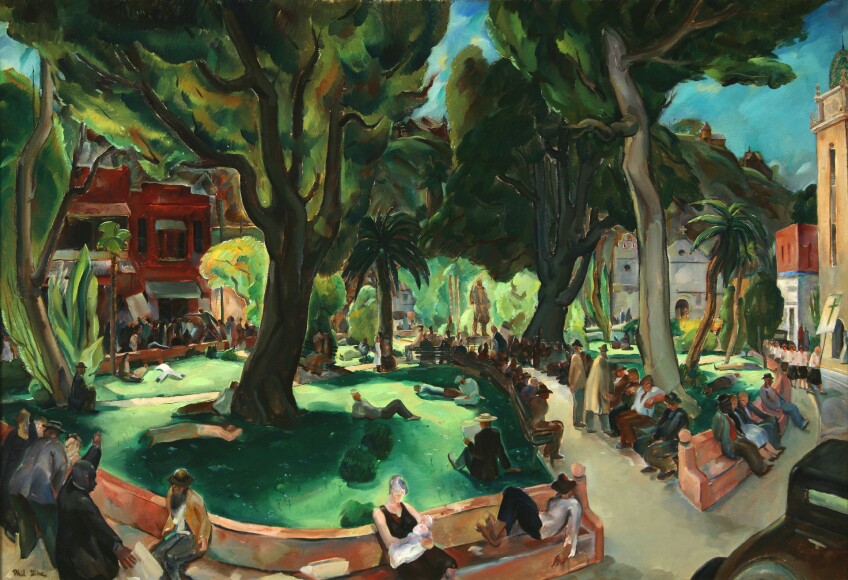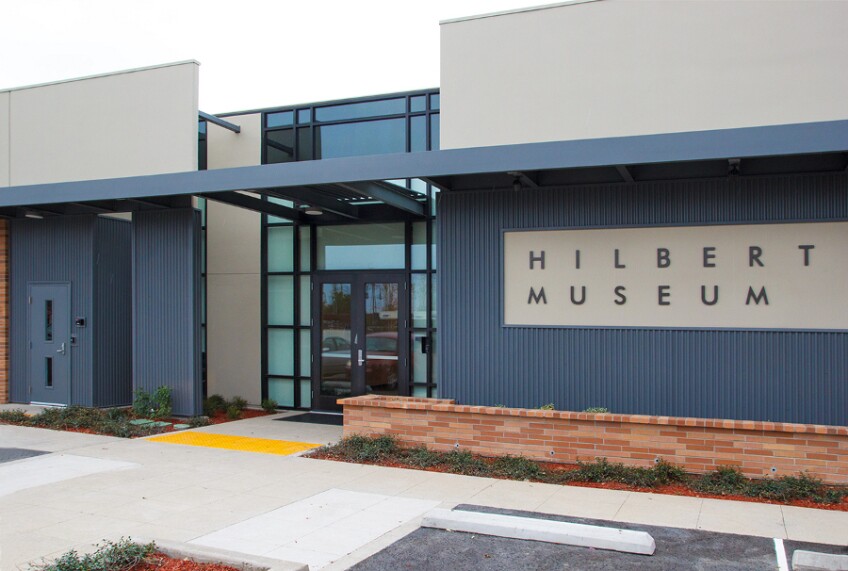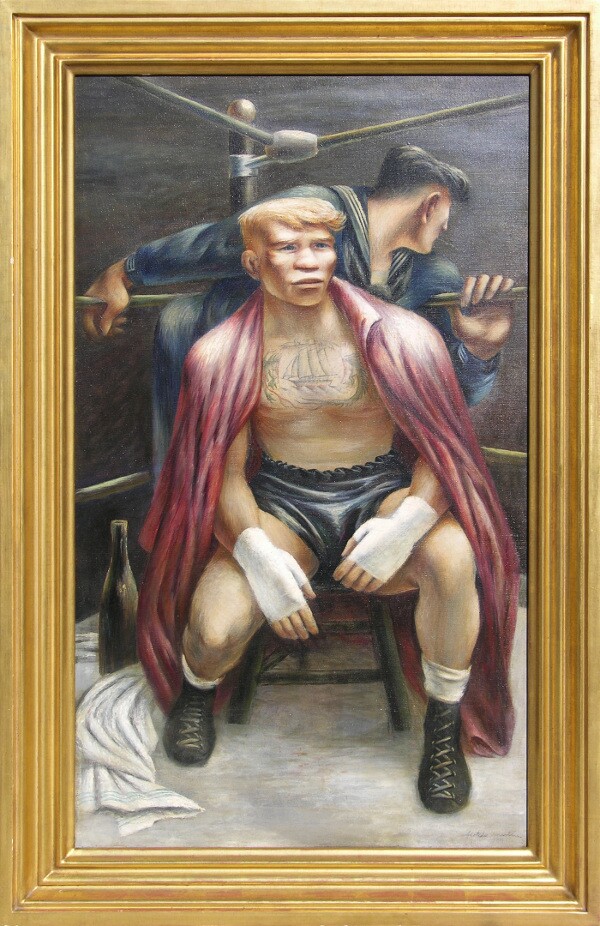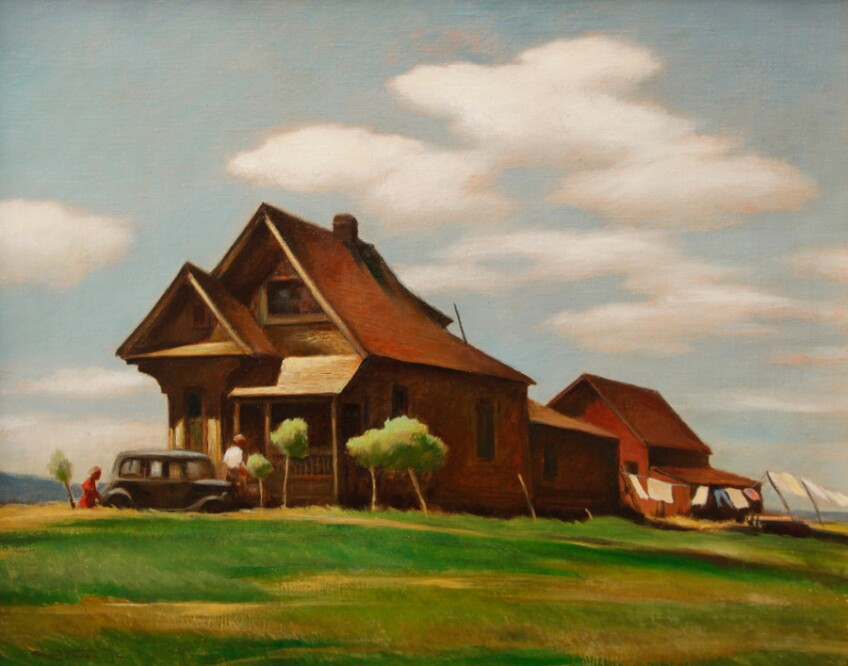The Hilbert Museum Reveals Treasures of California Scene Painting


As a high-profile philanthropist, Eli Broad is famous in part for opening his eponymous contemporary art museum, adjacent to Disney Concert Hall, just last fall. But in Orange County, a new museum takes a more subtle approach than Broad's zillion dollar institution. Art collector Mark Hilbert's quiet, thoughtful manner contrasts with Broad’s bravado and his new museum, opening this week on the Chapman University campus in Orange, displays treasures of California Scene Painting. With the collection of the Mark Hilbert Museum of California Art, he hopes to accomplish for California Scene Painting -- the mid-20th century school of art -- what Broad is doing for contemporary art. That is, Hilbert wants to educate and excite the art-going and general public about this narrative style of painting.
"[California Scene Painting] has seldom been exhibited since the artists first started painting these pictures,” Hilbert remarked. However, as a major collector of paintings of this style from the 1920s through 1970s, he is about to change this state of affairs with his inaugural exhibition, “Narrative Visions: 20th Century California Art From The Hilbert Collection,” opening February 26, 2016.

The 6,000-square-foot Hilbert Museum is located on the west campus of Chapman University in Orange. This Old Towne neighborhood with its historic buildings and old trees evokes many of the scenes in the museum’s paintings. “This location is where history, culture and imagery coincide, and it makes perfect sense to have it here,” Hilbert said. “The museum is a renovated industrial Chapman building, paid for in part by my donation of $3 million. It has a spare contemporary look with sandblasted and varnished concrete floors.”
The minimalist ambiance allows the moody and romantic aspects of the museum's 100 paintings to shine. While previewing the exhibition, Hilbert explained, “This is the only museum in the country to exhibit California Scene Paintings exclusively.” He added that most of the artworks in the collection include “people of dignity,” and that the California watercolors of the 1930s, “are expressive pieces from an important time period.” The artists painted these narrative pieces, while also employing representational, impressionistic, expressionistic and even cubist influences. Their artworks depict people in towns, cities, harbors, houses and ranches, leading their everyday lives. They also describe the changes taking place across California during the mid-20th century. Or as curator of this show Gordon McClelland wrote in the exhibition didactics, “Art can serve as a window to the past. This is particularly true when referring to paintings where the artist chose to visually tell a story.”
McClelland added that many of the California Scene Painters worked in the film industry for Universal, Paramount, MGM and 20th Century Fox studios, creating special effects for westerns and “film noir.” The moody aspects in many Hilbert Museum paintings reflect the numerous hours that these artists spent creating the backdrops for films.

One such painting is “San Dimas Train Station” of a 19th century lonely wooden train depot with a sloping roof, by artist Millard Sheets. McClelland described this work as, “an early example of American precisionist painting.” Another evocative painting is Preston Blair’s “Bunker Hill.” This is a nostalgic portrayal of old mansions, which were demolished or moved in the 1960s, making way for downtown L.A. expansion. The painting is compelling for its details and use of black paint, unusual for watercolors of that period. Another film-noir inspired painting is “San Pedro Street” by William Jekel who worked for MGM Studios in Culver City. McClelland discussed this piece in his book, “California Scene Paintings”: “The lighting in this painting is very theatrical looking and is much like the way the sets were lit for nocturnal scenes filmed on the back lot city streets.”
Working at 20th Century Fox studios in special effects, Emil Kosa Jr. had access to its movie ranches. He chose a ranch near Calabasas to paint his western-themed watercolor, “Back From the Ride,” with horses, an old barn and mountains in the background. The artist’s oil, “San Francisco,” an expressively painted scene of the city’s side and back streets, illustrates his range of styles.

Working in animation at the nearby Disney Studios were husband and wife, Lee and Mary Blair. Lee’s painting “Mary by the Sea” of Mary at her easel, the ocean in the background, is important as this portrait is of a woman who later designed the entrance to Tomorrowland and the “It’s a Small World” ride at Disneyland. Also working at Disney was Phil Dike whose “Plaza on Sunday,” an engaging narrative, illustrates people at leisure in a park even as World War II was raging. The work was reproduced in color in Fortune Magazine during a time when color reproductions were prohibitively expensive.
“The Disney cartoons and the California School watercolors shared formal features,” explained O.C.-based art historian/curator Susan M. Anderson in the 1991 catalog, “American Scene Painting.” She added, “They eschewed realistic detail and preferred well-defined outlines, undulating curves and serpentine lines… and relied on representational clichés and compositional schemes. The artists were also masters of characterization and the depiction of action or movement.”

Fletcher Martin’s “Lad From the Fleet,” while not influenced by the movie studios, is compelling as it calls up the late 1930s when the U.S. Navy was presenting boxing matches at the Port of Long Beach. The artist who also produced murals for the WPA used his draftsman skills to create this detailed, realistic painting; which evokes in spirit the famous “Dempsey and Firpo” by artist George Bellows located at the Whitney Museum in New York.
“The generation of artists in this show was the first group of native-born California painters,” Hilbert said. Artists from previous generations came here from disparate parts of this country and from Europe. He added, “In the mid 20th century, Los Angeles probably had more working artists than did any other city in the world.”

A recent visit to Mark and Jan Hilbert’s Newport Beach home revealed many other artworks displayed in the hallways, living room and dining room from their 1,000 piece collection. Hilbert, a fit, five-foot-ten, 70-year-old explained, “These works were inspired by American Scene Painting of the same period, by artists such as George Bellows, Thomas Hart Benton, Grant Wood and Edward Hopper. These paintings’ roots go back to the Ashcan School, depicting the grittiness of everyday life in New York City from 1900 to 1915.”
The backdrop for Hilbert's personal collection is their custom Italian-style home with high ceilings, cream-colored walls and Spanish style furnishings. Two of their favorite art objects are varguenos, or, “desks that tax collectors used,” he explained, adding, “The large wooden one is from 17th century Spain and the smaller silver one is from 18th century Peru.” Sitting at his Spanish Revival dining table in one of his six carved wooden chairs, he talked about his childhood in Pasadena, visiting his grandparents’ home with their amateur art collection. As a young man in the 1970s, he says he “started to buy run-down commercial properties that needed to be upgraded, and found that I had a natural ability for design and color.” Some of these buildings slated for demolishing were classic structures that he saved.

“In the 1980s, I often visited Santa Fe, New Mexico, where I began collecting Pueblo pottery, objects that we display in our home and often loan to museums. I was also interested in the paintings by early Taos artists, which are similar to California Scene Paintings, but they were very expensive.” His early fondness for these Native American paintings led naturally to his interest in the California paintings. “In 1992, Jan and I purchased our first watercolor from this style at a consignment store. We fell in love with this artwork and started buying more paintings. We soon recognized that these artists had never been acknowledged as a group.” They began to research the style, gaining impressive knowledge about it. And after making several trips to Europe to study the great masters, they concluded that much of the art hanging on their walls compared favorably to the paintings they had viewed on the continent.
As their collection grew and as museums around the country began borrowing their paintings, the idea of creating their own museum was born. Then the Hilberts approached Chapman University in 2014 with their grand idea, to donate $3 million in paintings and $3 million for the museum building. California scene paintings had finally found a home of their own.
As for the future of the Hilbert Museum, Janet Blake, Curator of Historical Art, Laguna Art Museum, made the prescient observation: “To have Chapman University involved in this period of California art history will bode well for scholarship by future art historians who are exploring this style and researching the individual artists.”
“Narrative Visions: 20th Century California Art From The Hilbert Collection” is on view at the Hilbert Museum of California Art in Orange, beginning February 26, 2016.









Top image: Phil Dike, “Plaza on Sunday,” 1942, oil on canvas, 30 x 40 in. Hilbert Museum of California Art.
Dig this story? Sign up for our newsletter to get unique arts & culture stories and videos from across Southern California in your inbox. Also, follow Artbound on Facebook, Twitter, and Youtube.


